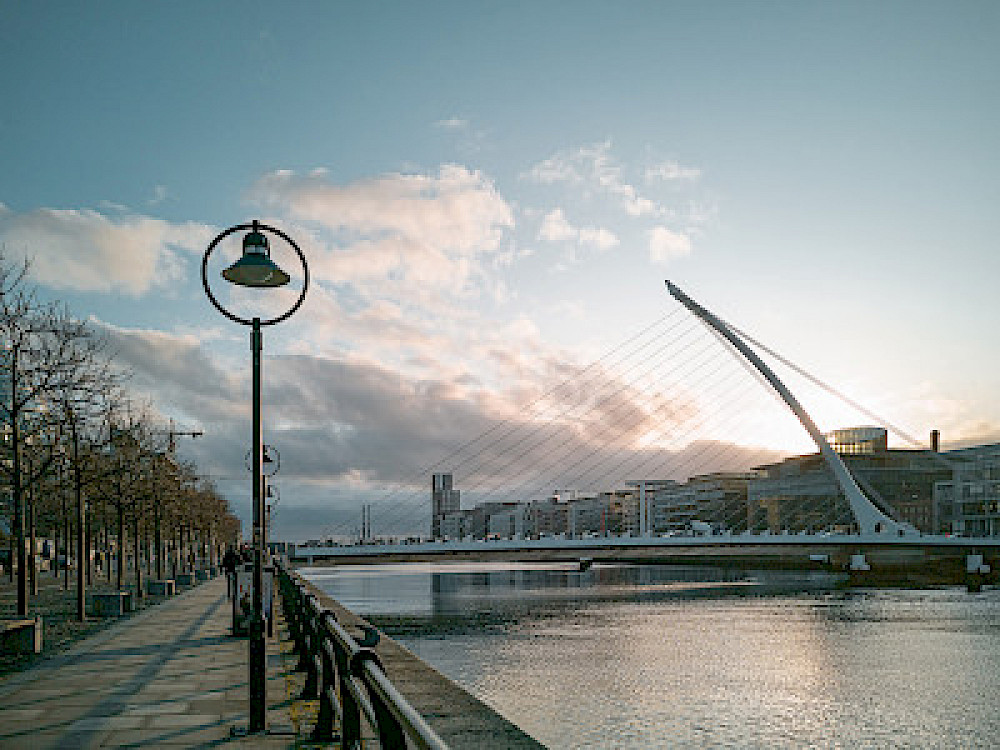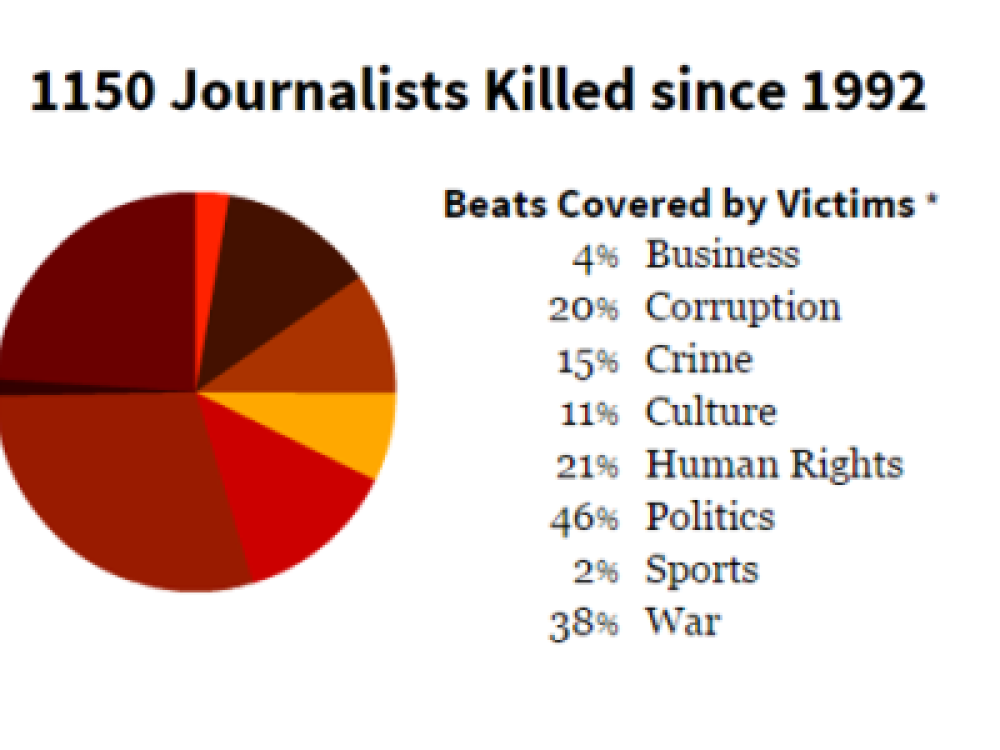Russia’s full-scale invasion of
Ukraine on 24 February and the escalation of Europe’s biggest war in the 21st
century has garnered massive media attention. Ukrainian journalists, citizens
and officials have been working non-stop to witness the tragedies of Russian
aggression and provide context, often using social media such as Telegram,
Twitter or YouTube for live reporting of events on the ground. Foreign media
professionals have also been working in and around Ukraine to document the
impact of the humanitarian crisis, the human rights atrocities and war crimes.
They have also reported on the displacement of millions of Ukrainian civilians
as well as other political and economic impacts of the war on a global scale.
The crisis unfolding around the
war has reinvigorated debates about key challenges of reporting on conflicts.
First among these is the challenge of creating impactful journalistic content
that captures the public interest and holds global attention. Closely tied to
it is ensuring the security of independent journalists working in conflict
zones. Third is the struggle to counteract disinformation and malicious
propaganda while prioritizing freedom of information in a highly charged
environment. None of these challenges are new, yet the present moment shows
that the impact of such crises on media coverage and news interest can differ
greatly depending on proximity to the conflict and other factors.
Russia’s full-scale invasion of
Ukraine has notably changed how both Ukrainian and foreign media have been
covering the simmering eight-year conflict after the 2014 Russian occupation of
Crimea and parts of eastern Ukraine’s Donbas region. Since February, many more
Western outlets have sent reporters to Ukraine and surrounding countries. In
May 2022, The Washington Post established a new Kyiv
Bureau – a first for the newspaper – to ground its Ukraine coverage, which
had previously been done from the Moscow office.
To satisfy the heightened interest in Ukrainian affairs, veteran local media organisations such as Ukrainska Pravda and NV (Novoe Vremya) rolled out new and improved English-language versions. The Kyiv Independent, a new website launched by a small team who left the Kyiv Post, became Ukraine’s fastest growing English-language publication, with editor-in-chief Olga Rudenko named one of TIME Magazine’s 2022 Next Generation Leaders.
These positive developments have been overshadowed by the tragic deaths of journalists working in Ukraine. According to Ukrainian media NGO the Institute of Mass Information, since 24 February, 29 Ukrainian and foreign journalists and media workers have died in Ukraine, with at least seven of them killed while doing their work.30 In territories occupied by Russia, independent journalists have been prevented from working, threatened, or detained. Media freedom organisations have highlighted the need for more economic support, especially for regional media, and safety training and gear for local reporters and fixers, with campaigns launched by the likes of the Media Development Foundation and support hubs opened by the Institute of Mass Information and Reporters Without Borders
Russian state media outlets RT
and Sputnik have been banned across the EU and restricted on social media as
conduits of state war propaganda and disinformation. Meanwhile, within Russia
itself, new draconian censorship laws have forced the remaining independent
media into exile, preventing journalists in the country from reporting
accurately about the war.
The turbulent events of the war
and their coverage seemingly had an uneven impact on media consumption and news
attitudes globally. A follow-up survey commissioned by the DNR in March-April
2022 to assess how Russia’s war in Ukraine might be changing news habits,
polled people in five countries: Brazil, Germany, Poland, the UK, and the US.
The survey found that, while a majority of the respondents in each country were
following news of Russia’s war in Ukraine at least ‘somewhat closely’,
geographical proximity – and immediate impact – were factors. Attention was
highest in Germany (with 84% following the news extremely closely, very closely
or somewhat closely), as well as in Poland, which borders Ukraine (72%), and
the UK (73%). These countries are close to the conflict and there, the economic
and political fallout is already affecting the lives of ordinary citizens. In
Brazil, both politically and geographically farther from the conflict, around
40% of news consumers were either not following it ‘very closely’ or not
following it at all.
Although not all changes in news
consumption can be attributed to extensive coverage of the conflict, the
follow-up survey found little evidence of the reversal of the key trends in the
prewar DNR survey – namely, decreases in news interest and increases in news
avoidance. In fact, in Germany, Poland, Brazil and the US, the proportion who
said they sometimes or often actively avoid the news had increased since the
start of the war. We know news avoidance can stem from the negative effect war
coverage has on people’s mood, so it is not surprising that the devastating
events of Russia’s war in Ukraine have caused more people to turn away from it.
Despite the increase in news
avoidance, the proportion who said they access news several times a day
increased in Poland by 6pp, as did the overall level of interest in news in the
country (also by 6 pp). This highlights that news avoidance and news interest
are not mutually exclusive. Yet it raises concerns about the impact of the
courageous work of frontline reporters, as it does not seem to have affected trust
in news (apart from a 4pp increase in the UK). Across the five countries,
nearly half or more of the respondents believed news media to be doing a good
job with coverage and keeping people up to date. At the same time, they felt
the media had not performed quite as well for explaining the wider implications
of the conflict or providing a different range of perspectives on it.
In Ukraine itself, the war
brought its own challenges for assessing media consumption and interest in
news. According
to 2021 research by Detector Media, television remained the most common
media channel for Ukrainians to access news about Ukraine and the world,
mirroring DNR’s own findings for the countries in its follow-up survey in 2022.
However, more
recent surveys reveal that Russian military attacks on communications
infrastructure and mass displacement of Ukrainian civilians have seen almost
one third of Ukrainian news consumers lose access to TV viewing in their homes.
A significant proportion of
Ukrainians have shifted their media consumption to online platforms, mixing
digital TV broadcasts with online news websites and social media channels. They
have prioritised mobile access over desktop (reflecting the loss of stable
fixed connections) and have been devoting
more time to online news – with many Ukrainian media outlets reporting a
75- 300% growth in traffic by April 2022.37 Despite heightened news
consumption, the top visited websites are still google.com, YouTube and Facebook.
Ukrainian media outlets also run active channels on messenger apps such as
Telegram, where many Ukrainians go to get news updates, real-time air raid
alerts, and latest casualty numbers. Overall Ukrainians’ time spent online has
dropped, perhaps indicative of the overall information fatigue.
While Ukrainians’ media consumption or news avoidance have been affected by the war far more directly than for media audiences elsewhere, the complex hybrid media environment nonetheless reinforces the value of in-depth reporting and the need for more journalistic efforts to explain the far-reaching implications of the conflict. Enabling local and foreign independent journalists to provide clear and contextualized coverage in a variety of forms and on multiple platforms, and giving them the resources to do so safely, should become the key task for media organisations and others supporting free expression and media development worldwide.
Dr Tetyana Lokot is an Associate Professor in DCU’s School of Communications.
This essay originally appeared as part of the 2022 Digital News Report Ireland. The full report can be accessed Here.




